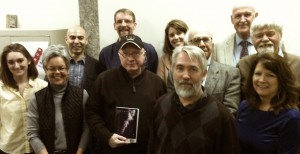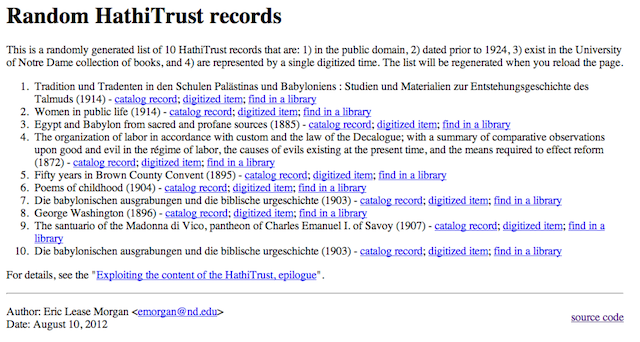Editors across campus: A reverse travelogue
Posted on March 8, 2013 in UncategorizedOn Friday, February 8 an ad hoc library group called The Willing sponsored a lunch for editors of serial titles from across campus, and this is all but the tiniest of “reverse travelogues” documenting this experience surrounding the scholarly communications process.
Professionally, I began to experience changes in the scholarly communications process almost twenty years ago when I learned how the cost of academic journals was increasing by as much as 5%-7% per year every year. With the advent of globally networked computers, the scholarly communications process is now effecting academics more directly.
In an effort to raise the awareness of the issues and provide a forum for discussing them, The Willing first compiled a list of academic journals whose editors were employed by the University. There are/were about sixty journals. Being good librarians, we subdivided these journals into smaller piles based on various characteristics. We then invited subsets of the journal editors to a lunch to discuss common problems and solutions.
The lunch was attended by sixteen people, and they were from all over the campus wearing the widest variety of hats. Humanists, scientists, and social scientists. Undergraduate students, junior faculty, staff, senior faculty. Each of us, including myself, had a lot to say about our individual experiences. We barely got around the room with our introductions in the allotted hour. Despite this fact, a number of common themes — listed below in more or less priority order — became readily apparent:
- facilitating the peer-review process
- going digital
- understanding open access publishing models
- garnering University support
- balancing copyrights (often called “ownership” by attendees)
- being financially sustainable
- combatting plagiarism
- facilitating community building around and commenting on journal content
- soliciting submissions
With such a wide variety of topics it was difficult to have a focused discussion on any one of them in the given time and allow everybody to express their most important concerns. Consequently it was decided by the group to select individual themes and sponsor additional get togethers whose purpose will be to discuss the selected theme and only the selected theme. We will see what we can do.
Appreciation goes to The Willing (Kenneth Kinslow, Parker Ladwig, Collette Mak, Cheryl Smith, Lisa Welty, Marsha Stevenson, and myself) as well as all the attending editors. “Thanks! It could not have happened without you.”













